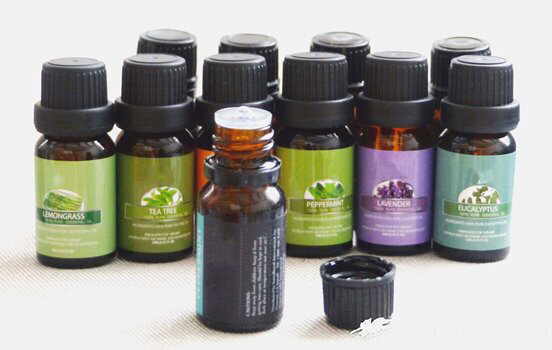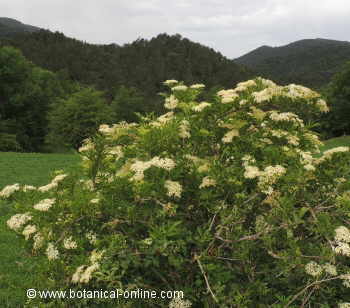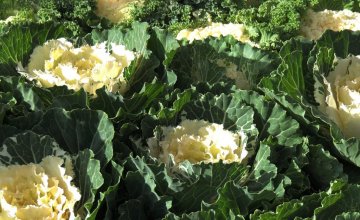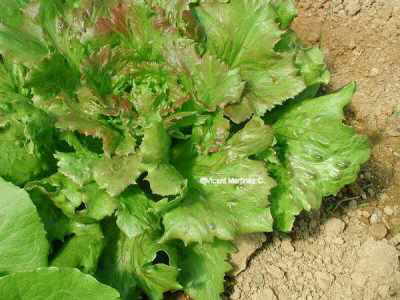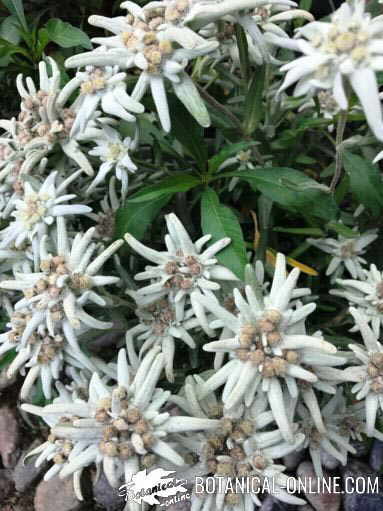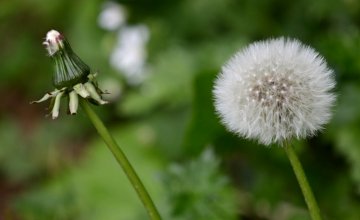Contents
(Citrullus vulgaris)
HOW TO GROW AND TAKE CARE OF WATERMELONS
|
 Characteristics of watermelon
Characteristics of watermelon
Watermelons (Citrullus vulgaris) belong to the Cucurbitaceae family, like other fruits in our diet such as pumpkin, zucchini and cucumbers.
Because this plant family shares their nutritional requirements, it is important not to combine them in the same field as they compete with each other or deplete the soil in these nutrients.
Watermelons are annual creeping plants up to 4m. Stems covered with hairs, 1 cm diameter, with tendrils. Leaves up to 20 cm wide by 15 cm long, sessile above, with hairs on the underside, pinnato-lobulate.
Solitary yellow flowers up to 4 cm in diameter. These are in the same plant, but there are some fully male or fully female (monoecious flowers), although there may be rare cases of hermaphroditism.
Large edible fruits (watermelon) up to 80 cm in length, roughly spherical or ovoid, smooth, green uniform or with darker bands.
Watermelons can weigh up to 20 kg, while their average weight is about 2.5 kg. Pulp red, yellow or pink. Black seeds. Melons are summer fruits.
 Climate
Climate
– Origin: Watermelon is a plant native from the Kalahari Desert (Southern Africa). As a desert plant, it is adapted to drought conditions and it is characterized by its shallow and very extended root system that can capture surface moisture.
– Habitat: It is grown in tropical and temperate zones.
– Minimum temperature: 12-14 º C
– Ideal place: in a very sunny (not grown in the shade). Watermelons are long-day plants.
– Very drought tolerant once established in the field.
 Soil
Soil
– Soil type: loose, lightweight, favoring root development. Clayey or sandy loam, well drained, rich composts with lot of organic matter. Sandy soils are warmer and more favorable. The soil should have been fertilized 1-3 months prior to the crop.
– It does not tolerate wet or flooded soils or frost.
– Tolerant to a pH in the range of 5.3 to 8.
WATERMELON CALENDAR CULTIVATION

WATERMELON CULTIVATION TASKS
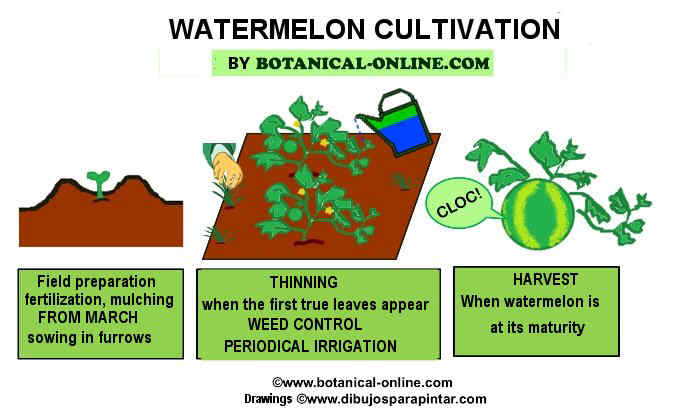
Watermelon growing tasks
– Prepare the soil one month before planting: deep plowing and fertilizing.
– Mulch the place to encourage root growth.
– March Sowing from 15 March It is done in furrows 2cm. deep. Cover lightly with soil. Between rows, there must be a minimum of 2.5 to 3 meters (it is a creeping plant that occupies large size).
– Germination occurs the following 5-10 days.
– Make a thinning in a few weeks, when they start out the first true leaves (remove some plants that grow to next to each other). They must maintain a minimum separation of 2 – 2,5 meters between plants.
– You can cover it with a plastic or hood to protect the first days of germination or until the plant touches the plastic.
– Watermelons need little care, mainly weeding: you must conduct a periodic weed control. In general, watermelon is not pruned, although some growers do it: secondary shoots of branches are cut for fruit production to be slightly smaller but of better quality.
– The fruit begins to ripen with high temperatures near 21 º C. The higher temperature during the ripening time, the more improved quality of the fruit.
– Watermelon depletes the ground and is prone to catch diseases when grown in the same place for some years. After a crop, rotation should be made. Avoid cultivate other cucurbits such as squash or zucchini.
 Watermelon watering
Watermelon watering
– Watering should be abundant in the early months, from May, making sure that the ground is well soaked for the plant to be established in the field.
– When the plant grows, you should water directly into the ground and not to the stems. Nor should water in broad daylight with the sun, but preferably at sunset.
– Do not over water, especially during the flowering season, as this can prevent pollination of flowers. Space watering when foliage is very vigorous.
– When fruiting, you should not water excessively. Excess irrigation leads to less flavored fruits and cracking of watermelon rind.
When to harvest watermelons? How do you know a melon is ripe?
Watermelons should be collected just when they are the right point of maturity. (More information)
 Watermelon diseases and plagues
Watermelon diseases and plagues
Among the most common ones, we have:
– Snails, slugs, worms and nematodes
– Watermelon aphid: Type of aphid type affecting watermelon and cantaloupe.
– Red Spider: causes yellowing of leaves
– Mildew
– Powdery mildew
![]() More information about watermelon.
More information about watermelon.

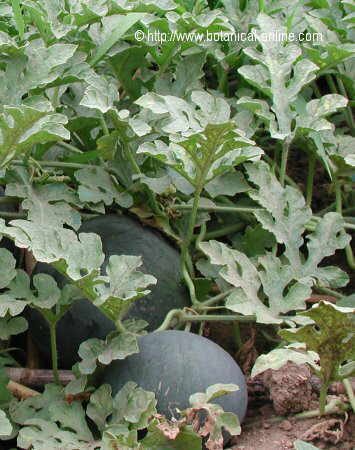
 Climate
Climate Soil
Soil Watermelon watering
Watermelon watering